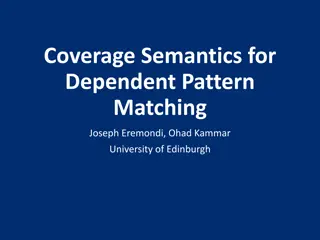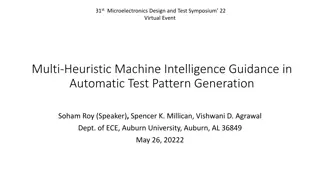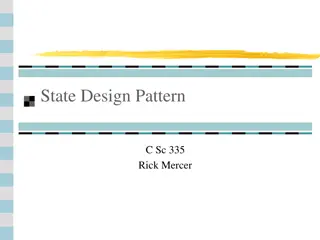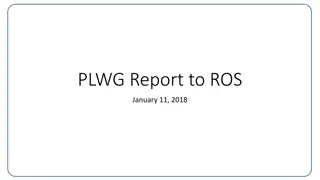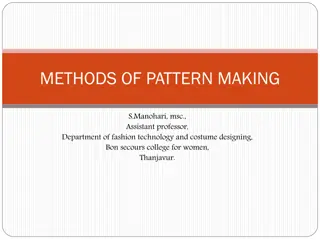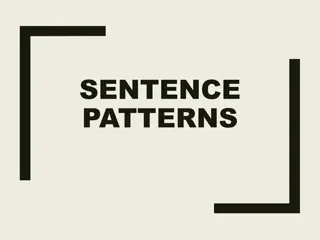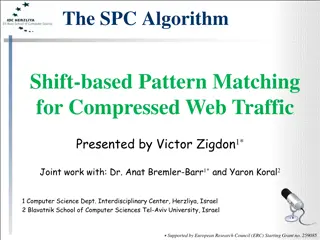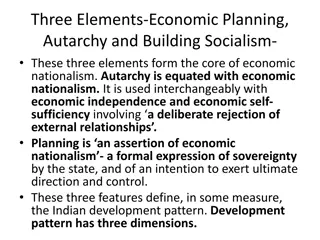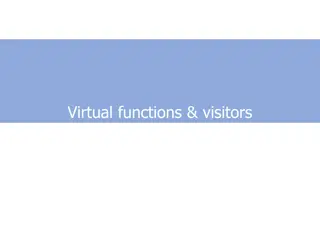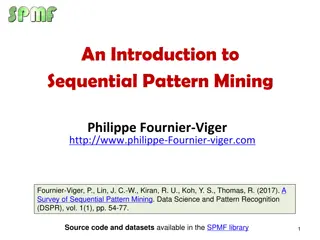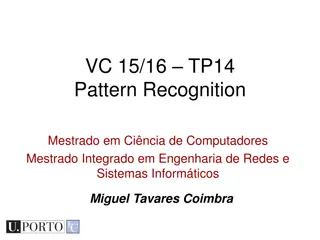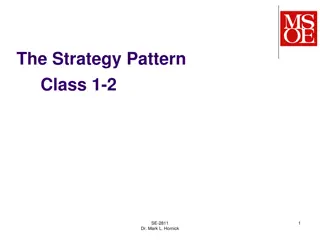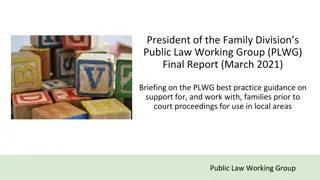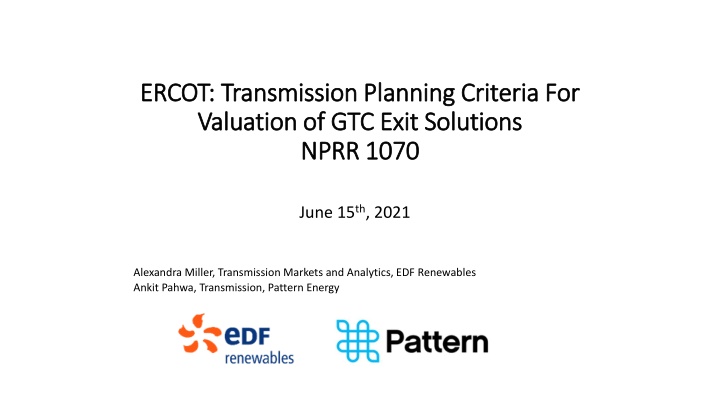
ERCOT Transmission Planning Criteria - Valuation of GTC Exit Solutions
"Explore ERCOT's Transmission Planning Criteria for Valuation of GTC Exit Solutions under NPRR 1070. Learn about modeling practices, legislative outcomes, bid price considerations, and more."
Download Presentation

Please find below an Image/Link to download the presentation.
The content on the website is provided AS IS for your information and personal use only. It may not be sold, licensed, or shared on other websites without obtaining consent from the author. If you encounter any issues during the download, it is possible that the publisher has removed the file from their server.
You are allowed to download the files provided on this website for personal or commercial use, subject to the condition that they are used lawfully. All files are the property of their respective owners.
The content on the website is provided AS IS for your information and personal use only. It may not be sold, licensed, or shared on other websites without obtaining consent from the author.
E N D
Presentation Transcript
ERCOT: Transmission Planning Criteria For ERCOT: Transmission Planning Criteria For Valuation of GTC Exit Solutions Valuation of GTC Exit Solutions NPRR 1070 NPRR 1070 June 15th, 2021 Alexandra Miller, Transmission Markets and Analytics, EDF Renewables Ankit Pahwa, Transmission, Pattern Energy
Executive Summary The content in this deck presents additional information in response to comments and feedback received NPRR 1070 is consistent with PUCT rules which mandate the metric of production cost savings and allow for indirect benefits to be accounted for, but which do not prescribe specific modeling assumptions Five modeling practices are proposed: 1. Reflect accurate bid price for categories of generators which typically bid negative, while fuel cost is kept at $0 for renewables 2. Reflect the typical limit derate due to transmission outages or model an expected outage case 3. Reflect derates of limits for safety margins as applied by Operations 4. Include the avoided cost of all avoided reliability projects 5. Estimate the value of avoiding curtailment of generation due to GTCs during load shedding events
Relevant Legislative Outcomes Moving forward with this NPRR is consistent with new law that encourages transmission development and the reduction of costly congestion SB1281 Calls for biennial grid assessment of grid reliability in severe weather Adds Consumer Cost Test Legislative Intent of Customer Cost Test in Conference Committee May 25 and May 30:
Bid Price Bid Price General Comment: The discussion is not about the societal impacts and costs of Production Tax Credits (PTC), which is a federal policy decision The ask is that the planning models reflect what is happening in the market: Different bid prices will change the dispatch, flows, and congestion costs. Models need to accurately estimate the production cost change when the transmission topology is changed Such approach is used in other RTOs as well (see table) Impact: The change in bid prices is not necessarily going to lead to an increase in benefits some evaluations may have lower benefits with this change we are seeking better accuracy not more benefit. Bid Assumptions in Other RTO Planning Models Wind PTC Bid Assumption ($/MWh) RTO SPP -35.00 PJM -20.00 MISO -36.69 CAISO -25.00 Legislative Outcome: SB1281 calls for the addition of a consumer impact test which will evaluate congestion cost, potentially more directly dependent on bid prices.
Bid Price Bid Price Scope of change: The language can be made more general by removing the word wind in case of future changes to PTC qualification. We do not want to be prescriptive with actual numbers in order to allow flexibility for future legislative changes or changing behavior of market participants. Current suggestions: Grossed up PTC round number: -$30.00 Depending on in-service year, use phase-out percentages: 2022 at 80%, 2023 at 60%, etc. Post PTC impact of RECs: Appropriate to keep it simple and stay with $0, due to small impact and uncertainty. Actual bidding behavior could be evaluated and considered in developing assumptions for individual or groups of project types. SB1281 impact, either: Remove and defer to PUCT guidance or Include so models are appropriate for both measures
Outages Outages Current approach using sensitivities is labor intensive and disregards that outages are common and expected; however, the outage statistics and experience can inform the proposed approach Proposed language allows for ERCOT s discretion on whether to model outages explicitly (affecting limits and topology) or to simply derate the limits by an expected amount. We support the simpler approach of derating seasonally by incorporating general expectations of future outage levels for prior outage lines. The range observed in recent history for a sample of GTCs ranges from 1% to 9%, however there is a short history for some GTCs, while Panhandle GTC derates are inclusive of the more exceptional CREZ repair outages Panhandle Export West Texas Export Nelson Sharpe- Rio Hondo GTC Valley Export Nedin-Lobo Impact of Outages on Limit* *Calculated impact from outages as average RT Generic Constraint Limit / maximum RT Generic Constraint Limit, (used monthly data as available from Jan 2019 to April 2021) results can be considered conservative because there could have been outages spanning a full month and setting the maximum limit 9% 1% 4% 4% 3%
Outages Outages Example calculation of Base Case Rating Assumptions for illustration: Outages are not overlapping Source: ERCOT - Impact of Weather Uncertainty and Transmission Outages on Economic Project Evaluations http://www.ercot.com/content/wcm/key_documents_lists/89026/Whitepaper_EcononmicPlanning.pdf Fall outage rate scaled down slightly to total 100% Fall Spring Summer Winter 0.009 Annual WESTEX Probability 345 kV Probabilistic Rating Outage Derate Aligns closely with the observed history of 4% derate (over the past partial fall-winter-spring) Need to confirm Double vs Single circuit rates, and could consider circuit length Fall rates indicate there will be some overlap and potentially lower ratings ( >100%) 0.059 0.027 0.021 0.028 Prior Outage Rating Fall Spring Summer Winter Annual 10.98 11.31 11.54 11.39 11.30 0.000 0.053 0.053 0.053 0.053 0.053 0.053 0.053 0.053 0.053 0.053 0.053 0.053 0.053 0.053 0.053 0.053 0.053 0.053 0.053 0.487 0.027 0.027 0.027 0.027 0.027 0.027 0.027 0.027 0.027 0.027 0.027 0.027 0.027 0.027 0.027 0.027 0.027 0.027 0.027 0.829 0.009 0.009 0.009 0.009 0.009 0.009 0.009 0.009 0.009 0.009 0.009 0.009 0.009 0.009 0.009 0.009 0.009 0.009 0.009 0.601 0.021 0.021 0.021 0.021 0.021 0.021 0.021 0.021 0.021 0.021 0.021 0.021 0.021 0.021 0.021 0.021 0.021 0.021 0.021 0.468 0.028 0.028 0.028 0.028 0.028 0.028 0.028 0.028 0.028 0.028 0.028 0.028 0.028 0.028 0.028 0.028 0.028 0.028 0.028 None SCKT 1 DCKT 1 DCKT 2 DCKT 3 SCKT 2 SCKT 3 SCKT 4 SCKT 5 SCKT 6 SCKT 7 SCKT 8 SCKT 9 SCKT 10 DCKT 4 DCKT 5 DCKT 6 DCKT 7 DCKT 8 DCKT 9 11.66 11.46 11.46 11.24 11.24 11.24 11.24 11.18 11.18 11.18 11.10 11.10 11.10 11.10 10.84 10.62 10.54 10.45 10.33 10.00 5.8% 3.0% 1.0% 2.3% 3.1%
Avoided Reliability Upgrades Avoided Reliability Upgrades Document current practice: Time frame of avoided projects? How are avoided projects identified? Cost Estimate method, source, or rule of thumb?
Reserve Margin Impact due to GTC Reserve Margin Impact due to GTC- -related Curtailments related Curtailments Currently there is no reflection of transmission constraints in reserve margin study and no accounting for impact to reserves in transmission planning Goal of proposal is to leverage existing reserve margin studies to estimate the impact of this cost to the system (load at risk) that is not currently included SB1281 Sec. 39.159. GRID RELIABILITY ASSESSMENT a biennial assessment of the ERCOT power grid to assess the grid s reliability in extreme weather scenarios could provide some additional evaluation of high impact scenarios We can generalize language to leverage this assessment and develop appropriate methodology for assessing the impact and costs of GTCs and other transmission constraints on resource adequacy
Appendix prior slides for reference Safety Margin Derates Outage and Safety margin Example Reserve Margin Impact
Safety Margin Derates Safety Margin Derates Export GTCs often have lower operational limits than the defined GTC limit, while Import GTCs may have lower or higher operational limits than the defined GTC limit due to required reserves for the load pockets Example IROL: WHEN: The BASECASE WESTEX flow is approaching 85% of the limit; THEN: Activate the BASECASE WESTEX constraint and control to 90% of the limit. : Export Limit If flow approaches: Then derate limit to: IROL (Panhandle, West Texas) Flow -> 85% Flow -> 92% Limit -> 90% Limit -> 85% GTC Stability Flow -> 85% Limit -> 98% Models should therefore reflect the most likely limit used by Operations when the GTCs will be binding (90% or 98%) for export GTCs, which is currently being done but needs to be documented in protocols to ensure continued best practice
Example of GTC Limit Derates from Both Outages and Example of GTC Limit Derates from Both Outages and Operational Margins Operational Margins Panhandle Export - Monthly Limit 4,500 4,000 3,500 3,000 2,500 MW Max Observed Limit* 2,000 Limit with Outage Impacts** Limit with Outage Impacts and Operational Derates*** 1,500 1,000 500 0 *Calculated as maximum Generic RT Constraint Limit **Calculated as average Generic RT Constraint Limit ***Calculated as average Combined Constraint Limit Sep-17 Sep-18 Sep-19 Sep-20 Jan-17 Jan-18 Jan-19 Jan-20 Jan-21 Nov-17 Nov-18 Nov-19 Nov-20 Jul-17 Jul-18 Jul-19 Jul-20 Mar-17 Mar-18 Mar-19 Mar-20 Mar-21 May-17 May-18 May-19 May-20
Reserve Margin Impact due to Curtailments Cost Reserves 1. Quantify total constrained generation 2. Determine impact on system reserve margin 3. Use EORM study results to determine change in cost for change in reserves 4. Allocate to each constraint Source: 2020 EORM Study SAWG Presentation 10/26/2020


